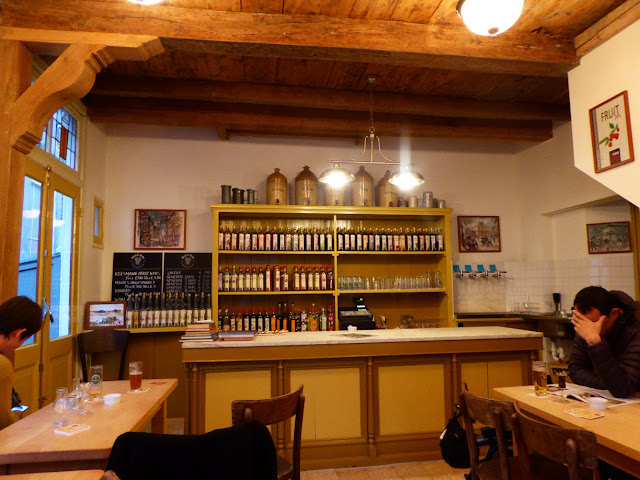It seems to have been a good year for barley in some countries:
“A record grain crop is reported from Denmark, the barley yield amounts to 2,125,000 tons as against 1,767,000 in 1951.
The crop in Syria was 350,000 tons compared with only 154,700 tons in 1951.
In the United States the final estimate of the 1952 barley crop is 227,000,000 bushels as against 254,300,000 in 1951.
Canada's yield of barley in 1952 was 274,074 bushels compared with 234,000 in 1951.”
"Brewer's Guardian 1953", 1953, February page 14.
Syria, Canada and the USA had at one time all exported large quantities of barley to the UK. Though imports had pretty much ground to nothing during and after the war. 200,000-odd bushels seems a very small crop for Canada. Assuming a bushel of barley to be 50 lbs, that’s only 122,000 cwt. Or bugger all. I’m struggling to believe the crop could be so small. Especially if you look at the table below and see that they exported millions of cwt. To the UK before the war.
I thought I’d take a look at barley imports before, during and after WW II. They make for interesting reading.
| 15. IMPORTED BARLEY | ||||||||
| (Authority: Trade and Navigation Accounts) | ||||||||
| Year ended 31st August | Australia | Canada | Russia | Iraq | U.S.A. | Chile | Other Countries | Total |
| cwt. | cwt. | cwt. | cwt. | cwt. | cwt. | cwt. | cwt. | |
| 1936 | 892,615 | 2,692,238 | 6,759,583 | 2,399,712 | 3,543,889 | 331,342 | 3,098,862 | 19,618,141 |
| 1937 | 670,199 | 626,657 | 322,304 | 5,270,584 | 2,031,655 | 671,605 | 8,399,527 | 17,992,531 |
| 1938 | 1,688,126 | 5,874,209 | 2,179,080 | 3,340,149 | 3,329,499 | 342,029 | 3,647,156 | 20,400,248 |
| 1939 | 835,126 | 4,707,322 | 3,141,703 | 3,783,659 | 2,461,117 | 356,867 | 2,629,013 | 17,914,870 |
| 1940* | 9,146,255 | |||||||
| 1941* | 66,688 | 664,150 | 540,050 | 1,276,772 | ||||
| 1942* | 34 | 34 | ||||||
| 1943* | — | |||||||
| 1944* | — | |||||||
| 1945* | Other Common-wealth Countries | Argentine Republic | 2,036,552 | |||||
| 1946* | 1 | 2,194,875 | 227 | 2,195,103 | ||||
| 1947 | 191,960 | 907,563 | 240 | 1,099,763 | ||||
| 1948 | 972,814 | 60 | 6,064,507 | 5,508,353 | 12,545,734 | |||
| 1949 | 1,293,517 | 1,674,111 | 6,174,600 | 9,142,228 | ||||
| 1950 | 2,068,450 | 9,366,235 | 2,286,108 | Morocco | 4,844,975 | 18,565,768 | ||
| 1951 | 2,137,957 | 74,845 | 6,037,568 | 3,153,702 | 3,393,373 | 2,207,419 | 17,001,865 | |
| 1952 | 2,952,005 | 3,239,322 | 10,428,526 | 3,752,089 | 801.347 | 1,541,926 | 22,715,214 | |
| 1953 | 2,985,396 | 8,183,753 | 3,170,909 | 4,940,632 | 164,919 | 8,983,320 | 28,428,829 | |
| 1954 | 2,374,714 | 8,196,281 | 713,766 | 1,886,652 | 259,988 | 2,226,233 | 4,796,646 | 20,454,290 |
| * Figures of imports from individual countries for the year 1940 are not available; the figures given for 1941-40 are for years ended 31st December. The quantity of barley imported for malting since the early months of 1940 is negligible. | ||||||||
| Source: | ||||||||
| 1955 Brewers' Almanack, page 67. | ||||||||
Before we go any further, I’d like to point something out. These figures aren’t just for malting barley. Which might explain the large quantities from Russia. I’ve never seen malt identified as being from Russian barley. Pre-WW II you see the USA, Chile, Australia and the Middle East mentioned in brewing logs, but nowhere else that I can remember.
You can see from the table how imports completely dried up during the war. And some countries never regained their market in the UK. Most notably the USA. Which had been one of the main sources of barley for British brewing for the first half of the century.
Not sure I understand this:
“It is reported from Scotland that more land is being sown under wheat and this, it is thought, will lead to a reduction in the acreage under barley which might tend to a better price for malting samples next season. This remains to be seen, as there is a lot to come out of the stack yet which could easily be against next season harvest with dire effect. There is little improvement in the price for barley to date, and with the quantity still remaining to be threshed, plus the limited demand for malting barley there seems small hope of prices rising. On the contrary it is feared that much of it will have to be cashed in at feeding rates towards the end of the season.”
"Brewer's Guardian 1953", 1953, February page 14.
Why would malting barley be cheaper if less barley were planted? Surely it should be the other way around?
I’ll end with the price of different types of malt in 1953:
“Current Prices for New Season Malts
Pale ale 208s. to 214s. Mild ale 192s. to 199s. Black 179s. to 182s. Brown 171s. to 174s. Crystal 164s. to 166s.
Per quarter, delivered to brewery.”
"Brewer's Guardian 1953", 1953, February page 14.
The only surprise for in the prices is that crystal malt is the cheapest. I would have expected black or brown malt. As the malt was roasted anyway, it was usually made from inferior barley.
That’s us done with barley in the early 1950’s. What next, I wonder?




























































































